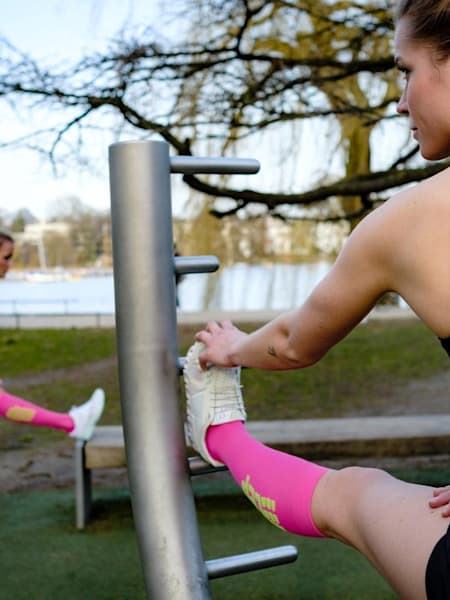In a world where those of us into sports all constantly seek ever-marginal gains in performance, we decided to get the lowdown on the science of compression and look at how there could be a benefit for everyone? Here are 10 key points.
1. Compression clothing started out in the field of medicine
It has a medical background that's been adapted for sport
Yes, compression clothing has its roots in medicine, where commonly it's used on patients whose blood pressure is low following an operation, or in those experiencing poor circulation. "Compression is medically used to increase bloodflow, while also dispersing lymphatic fluid," says CEP's Matt Davey. "So, it has a medical background that's been adapted for sport."
2. It's designed for purpose
It needs to be measured for the individual
However, it's not just about having tight-fitting Lycra in your sports clothing. To give true, useful compression, Davey says that it needs to be designed for purpose.
"Importantly, it needs to be measured for the individual," he says. "There are different ideal compression profiles for pre- and post-activity, and during exercise. Generally speaking, this means a higher compression during exercise like a high-impact run, versus lower compression for recovery, when heartrate is lower and you're resting.
3. It lowers the risk of DVT for the fitter athlete
Athletes can be more prone to deep-vein thrombosis syndrome
"The fitter you are, the lower your resting heartrate tends to be," says Davey. "Interestingly, we see that, when travelling, athletes can be more prone to deep-vein thrombosis syndrome so compression can be useful here too. Studies show that, when travelling, you get a lighter feeling and feel fresher when using compression garments."
4. It's not just about improving circulation
There’s a heightened sense of movement when you wear compression clothing
Another key benefit of using compression – before, during and after exercise – is injury prevention. Davey explains that this is linked to increasing the efficiency of the muscles when they're working.
"We know that compression can increase circulation, but it can also increase muscle stabilisation and awareness to promote good movement patterns," he says. "There's a heightened sense of movement when you wear compression clothing, which helps you to adopt correct positions. At the same time, it helps to disperse lymphatic build up and remove waste products like lactic acid from the muscles," he continues. "Venous return to the heart is increased so that blood can be re-oxygenated, which can help boost performance and recovery rates."
5. There are different garments for activity and recovery
Compression clothing for recovery doesn't need to be as compressive as garments used during exercise, because the muscles are no longer working. Also, unlike during exercise, where you'll typically wear compression clothing for the duration of your activity, recovery compression should be used as more as a 'shock treatment'.
6. However, you should use some compression wear sparingly
Two to four hours is the optimum timeframe
"Compression garments used for recovery or preparation shouldn't be used for prolonged periods, as the body adapts to its presence," Davey explains. "In this case, two to four hours is the optimum timeframe before or after exercise."
7. It's especially useful for runners
The repetitive impact of running is going to take its toll
Those who experience high-impact trauma, like runners, are likely to benefit greatly from using compression clothing, says Davey. "In this case, the repetitive impact of running is going to take its toll on your muscles, especially if you're not super-lightweight.
8. It's as much part of a regular fitness regime as healthy eating and hydration
Whether you're a weekend warrior or daily trainer, you'll benefit
"By the same token, anyone who wants to train regularly could also see benefits – whether you're a weekend warrior or daily trainer, you'll benefit," Davey says. "It's the same as drinking water, eating healthily and sleeping well. All contribute to improve performance and recovery."
9. It's helpful even when you're completely away from training
"Recovery socks are perfect for travel and everyday use, when you're sat at your desk or have a long day on your feet," says Davey.
10. Top triathlete Kimberley Morrison swears by it
Compression garments support the race, training stress and recovery
We spoke to British triathlete Kimberley Morrison to find out her reasons for using compression wear.
"Compression garments support the race, training stress and recovery in my day-to-day life," says Morrison. "Performance is key each and every day when we strive to better our best. If we can perform optimally and reduce stress and increase rest, as athletes we'll get stronger, fitter and faster."













